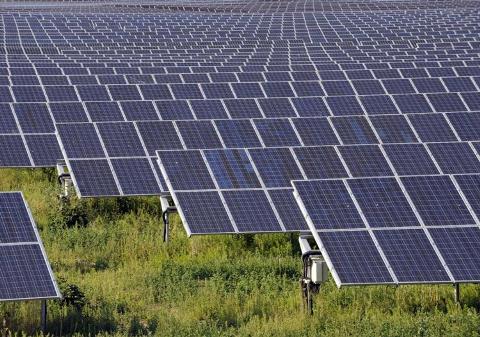ICTpost Energy Bureau
According to ICTpost Energy Tracker, renewable power installations (excluding large hydro projects) held a 24.2% share of the India’s overall power mix and stood at about 90.6 GW as of September 30, 2020. This was a marginal increase from last quarter’s 89.5 GW. In the same period the previous year, the country had about 85.3 GW of renewable installations (excluding large hydro). In terms of market share, solar power held about 9.9%, wind power held around 10.2%, bio-power held 2.7%, small hydropower held 1.3%, and waste-to-power projects held a meager 0.05% share
Development of so-called thin film technology in solar power makes it the energy source to bet on, too. On January 11, 2010, Jawaharlal Nehru National Solar Mission (JNNSM) was launched by the then Prime Minister of India, Dr. Manmohan Singh to achieve 20 GW solar capacity by the year 2022 which was increased under Prime Minister Modi’s tenure to 100 GW by the said year. Like Rajasthan, Gujarat has high levels of solar radiation, and it has promised investors returns of Rs 15 per unit for the first 12 years.
Business models are innovation engines for the solar industry. They should appropriately reflect true solar costs. Solar is highly visible and ripe for business plan innovation. A model truly reflective of solar costs that takes into account the customer’s needs will win hearts, minds and wallets.
It is easy to play on optimism, on the hopes of an industry that is beset on all sides by doubters, true believers as well as a host of competing energy technologies. These days there is an overcapacity of information about how and when the industry will return to profitability: which markets will prove significant in size, and which technology will arrive at a manufacturing cost low enough to support low prices?

Optimism is necessary for solar industry participants to continue in the face of, basically, all-of-the above but only if it does not blind them to the practical realities of day-to-day business in the energy world. Several years ago an irrational belief in the inevitability of the FiT, which initially were profit machines that spawned the utility scale market. It was assumed by most people that these instruments would never end, and would migrate from market to market opening the entire world up to the inevitability of solar. This has indeed proven true the original FiT traveled from market to market shutting them down one by one while slowly evolving into the margin-destroying tender bidding model.
It will not be easy and participants will continue to fall prey to get rich (or this is how you get rich) schemes, but in the end, practical optimism will win out and the world will be better for it. The coming recovery is not a dream; it is a practical reality that will come to pass in part because of the optimism of solar industry participants.
editor@ictpost.com








